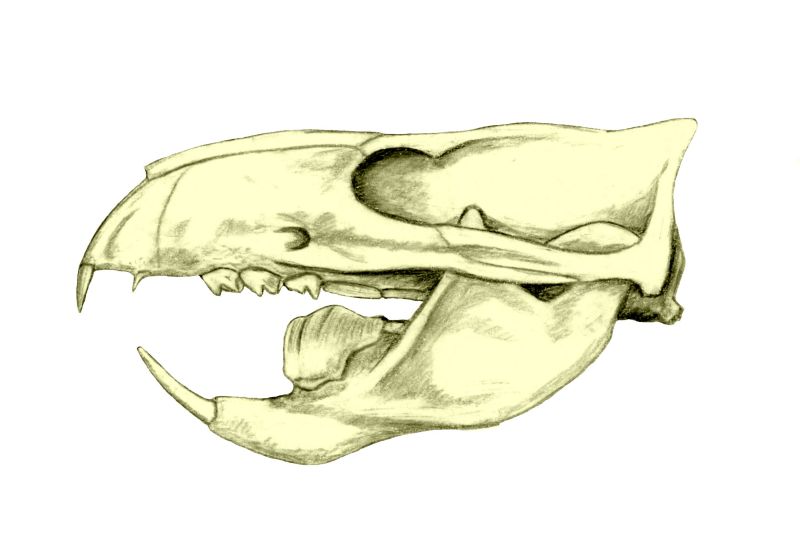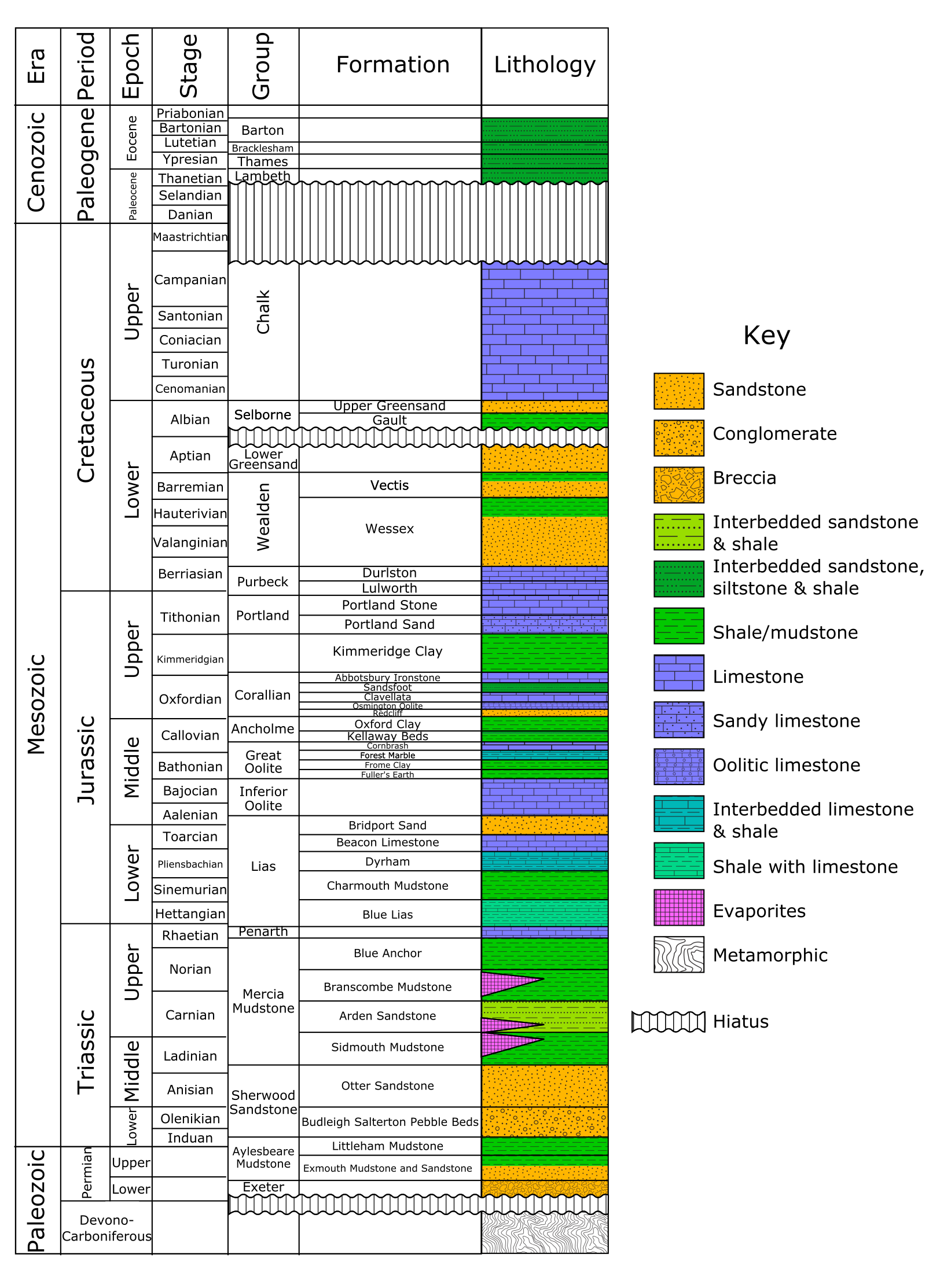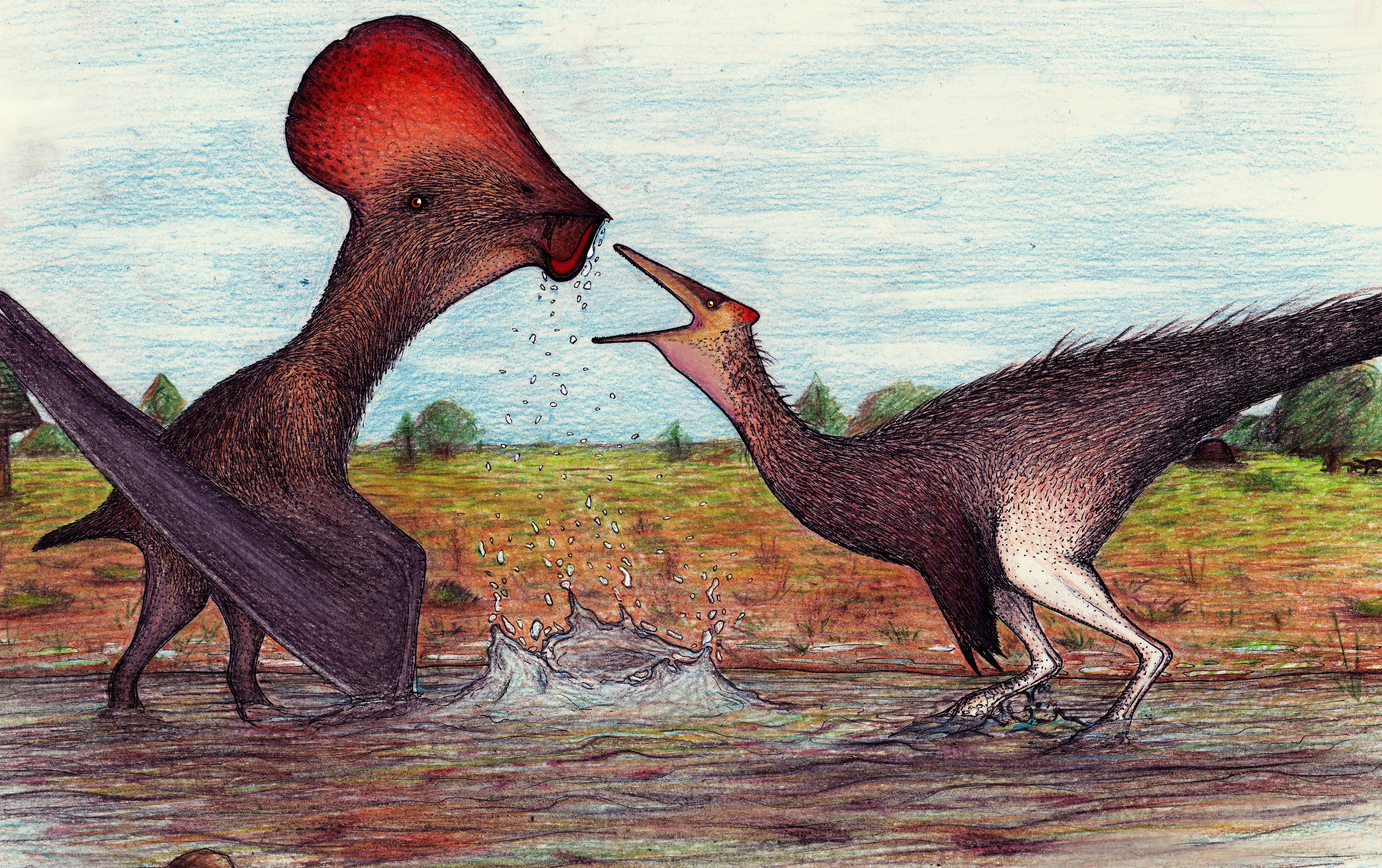|
Eobaatar
''Eobaatar'' is a genus of extinct mammal from the Lower Cretaceous of Mongolia, Spain and England. A member of the also extinct order Multituberculata, it lies within the suborder Plagiaulacida and family Eobaataridae. The genus ''Eobaatar'' was named by Kielan-Jaworowska Z., Dashzeveg D. and Trofimov B.A. in 1987. Its name was made from Greek "eos" = "dawn" and Mongolian "baatar" = "hero"", "warrior". Species ''Eobaatar hispanicus'' This species was named by Hahn G. and Hahn R. in 1992. Remains consisting of a single tooth were found in Hauterivian - Barremian (Lower Cretaceous)-age strata of the Camarillas Formation, Spain. ''Eobaatar magnus'' This species was named by Kielan-Jaworowska Z., Dashzeveg D. and Trofimov B.A. in 1987. It is based on a fragment of lower jaw with teeth found in Aptian or Albian (Lower Cretaceous) strata of the Dzunbain Formation in Guchin Us County, Mongolia, and had a cranial length of about 3 cm. ''Eobaatar minor'' This species was also ... [...More Info...] [...Related Items...] OR: [Wikipedia] [Google] [Baidu] |
Plagiaulacida
Plagiaulacida is a group of extinct multituberculate mammals. Multituberculates were among the most common mammals of the Mesozoic, "the age of the dinosaurs". Plagiaulacids are a paraphyletic grouping, containing all multituberculates that lie outside of the advanced group Cimolodonta. They ranged from the Middle Jurassic Period to the early Late Cretaceous of the northern hemisphere. During the Cenomanian, they were replaced by the more advanced cimolodontans. Kielan-Jaworowska and Hurum (2001) divides “Plagiaulacida” into three informal lineages, the paulchoffatiids, the plagiaulicids, and the allodontids. Allodontid line The Allodontid line may be a superfamily, Allodontoidea. Both allodontids and paulchoffatiids (below) were among the most basal of the plagiaulacids. The Allodontid line contains: The family Allodontidae is known from two genera from the Upper Jurassic Morrison Formation of North America. The family Zofiabaataridae contains a single genus, '' Zofia ... [...More Info...] [...Related Items...] OR: [Wikipedia] [Google] [Baidu] |
Multituberculates
Multituberculata (commonly known as multituberculates, named for the multiple tubercles of their teeth) is an extinct order of rodent-like mammals with a fossil record spanning over 130 million years. They first appeared in the Middle Jurassic, and reached a peak diversity during the Late Cretaceous and Paleocene. They eventually declined from the mid Paleocene onwards, disappearing from the known fossil record in the late Eocene. They are the most diverse order of Mesozoic mammals with more than 200 species known, ranging from mouse-sized to beaver-sized. These species occupied a diversity of ecological niches, ranging from burrow-dwelling to squirrel-like arborealism to jerboa-like hoppers. Multituberculates are usually placed as crown mammals outside either of the two main groups of living mammals—Theria, including placentals and marsupials, and MonotremataAgustí-Antón 2002, pp 3-4—but usually as closer to Theria than to monotremes. They are considered to be clo ... [...More Info...] [...Related Items...] OR: [Wikipedia] [Google] [Baidu] |
Eobaataridae
Eobaataridae is a family of fossil mammals within the order Multituberculata. Remains are known from the Lower Cretaceous of Europe and Asia. They are among the most derived representatives of the informal suborder "Plagiaulacida", and closely related to Cimolodonta. Most eobaatarids are only known from isolated teeth, though several reasonably complete members are known, including '' Sinobaatar'' and ''Jeholbaatar''. The body of ''Sinobaatar'' is generalised, while ''Jeholbaatar'' displays clear adaptations for scansoriality (climbing) due to its elongated digits. Due to the morphology of the cheek teeth, ''Eobaatar'' and ''Jeholbaatar'' are inferred to be omnivorous, likely feeding on plants and invertebrates. ''Indobaatar'' from the Early Jurassic Kota Formation has been suggested to be the earliest known multituberculate, let alone the earliest eobaatarid, and may stretch the eobaatarid-cimolodontan group much earlier than previously thought. However its referral to the family ... [...More Info...] [...Related Items...] OR: [Wikipedia] [Google] [Baidu] |
Multituberculata
Multituberculata (commonly known as multituberculates, named for the multiple tubercles of their teeth) is an extinct order of rodent-like mammals with a fossil record spanning over 130 million years. They first appeared in the Middle Jurassic, and reached a peak diversity during the Late Cretaceous and Paleocene. They eventually declined from the mid Paleocene onwards, disappearing from the known fossil record in the late Eocene. They are the most diverse order of Mesozoic mammals with more than 200 species known, ranging from mouse-sized to beaver-sized. These species occupied a diversity of ecological niches, ranging from burrow-dwelling to squirrel-like arborealism to jerboa-like hoppers. Multituberculates are usually placed as crown mammals outside either of the two main groups of living mammals—Theria, including placentals and marsupials, and MonotremataAgustí-Antón 2002, pp 3-4—but usually as closer to Theria than to monotremes. They are considered to be clo ... [...More Info...] [...Related Items...] OR: [Wikipedia] [Google] [Baidu] |
Wessex Formation
The Wessex Formation is a fossil-rich English geological formation that dates from the Berriasian to Barremian stages (about 145–125 million years ago) of the Early Cretaceous. It forms part of the Wealden Group and underlies the younger Vectis Formation and overlies the Durlston Formation. The dominant lithology of this unit is mudstone with some interbedded sandstones. It is part of the strata of the Wessex Basin, exposed in both the Isle of Purbeck and the Isle of Wight. While the Purbeck sections are largely barren of vertebrate remains, the Isle of Wight sections are well known for producing the richest and most diverse fauna in Early Cretaceous Europe. Nomenclatural History The Wessex Formation has historically alternately been called the "Variegated Marls And Sandstones", a name used by W. J. Arkell in his 1947 map of the Isle of Purbeck as well as the "Wealden Marls" It was given its current formal name by Daley and Stewart in 1979 Stratigraphy and Lithology In ... [...More Info...] [...Related Items...] OR: [Wikipedia] [Google] [Baidu] |
Camarillas Formation
The Camarillas Formation is a geological formation in the Teruel Province of Aragón, Spain whose strata date back to the Early Cretaceous (Barremian stage). The sandstones, mudstones and conglomerates of the formation, that due to syn-sedimentary faulting varies greatly in thickness from , were deposited in fluvial, deltaic and lacustrine environments. The formation was deposited in the Galve Sub-basin of the Maestrazgo Basin in central-eastern Spain. During deposition, Iberia was an island, separated by seas from North Africa and France. Underlying the Camarillas Formation is the also highly fossiliferous El Castellar Formation and the Artoles Formation rests on top of the formation.Herrero Gascón & Pérez Lorente, 2009, p.68 The Camarillas Formation has provided a rich fossil assemblage of fossils of mammals, snakes, turtles, crocodylians, fish, dinosaurs and their eggs. Various tracksites of families of dinosaurs exist in the formation. Dinosaur remains have been rec ... [...More Info...] [...Related Items...] OR: [Wikipedia] [Google] [Baidu] |
La Huérguina Formation
The La Huérguina Formation (also known as the Calizas de La Huérguina Formation, La Huérguina Limestone Formation or as the Una Formation) is a geological formation in Spain whose strata date back to the Barremian stage of the Early Cretaceous.Martínez et al., 2017 Las Hoyas is a Konservat-Lagerstätte within the formation, located near the city of Cuenca, Spain. The site is mostly known for its exquisitely preserved dinosaurs, especially enantiornithines.Weishampel et al., 2004, pp.556-563 The lithology of the formation mostly consists of lacustarine limestone deposited in a freshwater wetland environment. Las Hoyas Taphonomy As a Konservat-Lagerstätten, the preservation is exceptional. This may be a result of three factors: Microbial mats, Obruption and Stagnation. Microbial mats may be responsible for the preservation of soft tissue in many fossils from Las Hoyas, like ''Pelecanimimus''' crest. The iron carbonate depositions, a result from bacterial metabolism whic ... [...More Info...] [...Related Items...] OR: [Wikipedia] [Google] [Baidu] |
England
England is a country that is part of the United Kingdom. It shares land borders with Wales to its west and Scotland to its north. The Irish Sea lies northwest and the Celtic Sea to the southwest. It is separated from continental Europe by the North Sea to the east and the English Channel to the south. The country covers five-eighths of the island of Great Britain, which lies in the North Atlantic, and includes over 100 smaller islands, such as the Isles of Scilly and the Isle of Wight. The area now called England was first inhabited by modern humans during the Upper Paleolithic period, but takes its name from the Angles, a Germanic tribe deriving its name from the Anglia peninsula, who settled during the 5th and 6th centuries. England became a unified state in the 10th century and has had a significant cultural and legal impact on the wider world since the Age of Discovery, which began during the 15th century. The English language, the Anglican Church, and Engli ... [...More Info...] [...Related Items...] OR: [Wikipedia] [Google] [Baidu] |
Aptian Genus Extinctions
The Aptian is an age in the geologic timescale or a stage in the stratigraphic column. It is a subdivision of the Early or Lower Cretaceous Epoch or Series and encompasses the time from 121.4 ± 1.0 Ma to 113.0 ± 1.0 Ma (million years ago), approximately. The Aptian succeeds the Barremian and precedes the Albian, all part of the Lower/Early Cretaceous. The Aptian partly overlaps the upper part of the Western European Urgonian Stage. The Selli Event, also known as OAE1a, was one of two oceanic anoxic events in the Cretaceous Period, which occurred around 120 Ma and lasted approximately 1 to 1.3 million years. The Aptian extinction was a minor extinction event hypothesized to have occurred around 116 to 117 Ma.Archangelsky, Sergio.The Ticó Flora (Patagonia) and the Aptian Extinction Event" ''Acta Paleobotanica'' 41(2), 2001, pp. 115-22. Stratigraphic definitions The Aptian was named after the small city of Apt in the Provence region of France, which is also known for its cry ... [...More Info...] [...Related Items...] OR: [Wikipedia] [Google] [Baidu] |
Fossils Of England
A fossil (from Classical Latin , ) is any preserved remains, impression, or trace of any once-living thing from a past geological age. Examples include bones, shells, exoskeletons, stone imprints of animals or microbes, objects preserved in amber, hair, petrified wood and DNA remnants. The totality of fossils is known as the ''fossil record''. Paleontology is the study of fossils: their age, method of formation, and evolutionary significance. Specimens are usually considered to be fossils if they are over 10,000 years old. The oldest fossils are around 3.48 billion years old to 4.1 billion years old. Early edition, published online before print. The observation in the 19th century that certain fossils were associated with certain rock strata led to the recognition of a geological timescale and the relative ages of different fossils. The development of radiometric dating techniques in the early 20th century allowed scientists to quantitatively measure the absolute ... [...More Info...] [...Related Items...] OR: [Wikipedia] [Google] [Baidu] |
Fossils Of Mongolia
A fossil (from Classical Latin , ) is any preserved remains, impression, or trace of any once-living thing from a past geological age. Examples include bones, shells, exoskeletons, stone imprints of animals or microbes, objects preserved in amber, hair, petrified wood and DNA remnants. The totality of fossils is known as the ''fossil record''. Paleontology is the study of fossils: their age, method of formation, and evolutionary significance. Specimens are usually considered to be fossils if they are over 10,000 years old. The oldest fossils are around 3.48 billion years old to 4.1 billion years old. Early edition, published online before print. The observation in the 19th century that certain fossils were associated with certain rock strata led to the recognition of a geological timescale and the relative ages of different fossils. The development of radiometric dating techniques in the early 20th century allowed scientists to quantitatively measure the absolute ... [...More Info...] [...Related Items...] OR: [Wikipedia] [Google] [Baidu] |
Fossils Of Spain
A fossil (from Classical Latin , ) is any preserved remains, impression, or trace of any once-living thing from a past geological age. Examples include bones, Seashell, shells, exoskeletons, stone imprints of animals or microbes, objects preserved in #Resin, amber, hair, petrified wood and DNA remnants. The totality of fossils is known as the ''fossil record''. Paleontology is the study of fossils: their age, method of formation, and evolutionary significance. Specimens are usually considered to be fossils if they are over 10,000 years old. The oldest fossils are around 3.48 billion years old to 4.1 billion years old. Early edition, published online before print. The observation in the 19th century that certain fossils were associated with certain rock stratum, strata led to the recognition of a geological timescale and the relative ages of different fossils. The development of radiometric dating techniques in the early 20th century allowed scientists to quantitativ ... [...More Info...] [...Related Items...] OR: [Wikipedia] [Google] [Baidu] |






